How an accelerated warming cycle in Alaska’s Bering Sea is creating ecological havoc
“We’ve fallen off the cliff. We’re not approaching the cliff. We’ve fallen off it.”
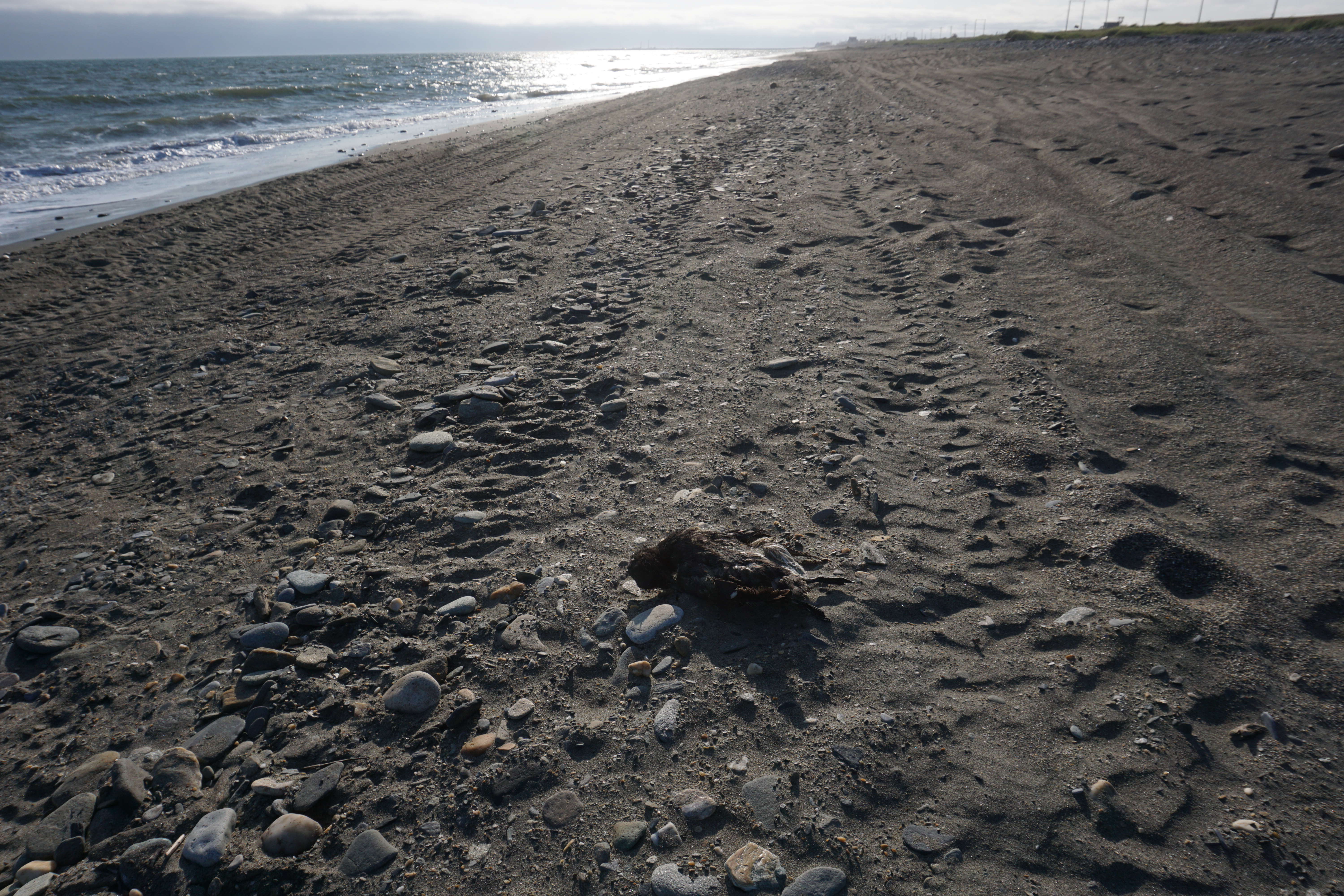
In the Bering Strait region, where a narrow passage separates Alaska from Russia and links the Arctic Ocean to the Pacific, the sea ice is long gone and mayhem has taken hold in the marine environment.
The most striking signs are on the shorelines, which have been littered with dead animals ranging from tiny shellfish to giant whales.
The toll of discovered dead animals as of mid-July: 137 ice-dependent seals and five gray whales, according to the National Oceanic and Atmospheric Administration; dozens of walruses, piles of bird carcasses — marking what has become the latest in five consecutive years of bird die-offs in the region; carcasses of salmon that never got the chance to spawn clogging rivers and streams; and in some spots, stretches of dead blue mussels and krill have coated beaches.
Sometimes animals are found alive, but only barely so. A walrus found in June near Solomon, a village 30 miles east of Nome, was so thin that its ribs were visible and so weak its head was down on the ground, according to a local report. “It was having trouble keeping its head out of the mud,” said the report filed with the Local Environmental Observer network operated by the Alaska Native Tribal Health Consortium.
The animal die-offs and strandings, part of a series hitting the Bering Strait region since at least 2016, are sobering, residents say. “To see that many dead whales, it’s weird,” said Adelaine Ahmasuk, who spotted a dead baleen whale of some sort, a dead beluga and a dead bearded seal on a single fishing trip with her family.
A warming spiral
The leading suspect: Extreme warmth that, this summer, brought air temperatures in places to the high 80s and even low 90s Fahrenheit (or into the 30s Celsius) and cooked marine waters.
This summer’s heat, coming three years after scientists proclaimed what was then the longest and hottest Bering Sea marine heat wave in the satellite record, is no one-off. Rather, it is part of a warming spiral that appears to be accelerating, with effects flowing north through the narrow strait into Arctic Ocean waters.
Freeze-up that used to come in fall is now delayed to mid-winter and the ice that forms is thin. That thinner ice melts earlier, exposing open waters that absorb more of the sun’s heat. That means water temperatures soar, freeze-up is again delayed, the late-forming winter ice is again thin, melt is early, and so on.
Every year since 2015, the Bering Sea on the south side of the strait has melted out earlier than in every year before 2015. In the Chukchi Sea, to the north of the strait, the full Arctic winter freeze that used to come as early as the end of October is now arriving in mid-December or later; in the winter before last, the full freeze did not happen until New Year’s.
“We’ve fallen off the cliff. We’re not approaching the cliff. We’ve fallen off it,” Rick Thoman, a veteran scientist with the Alaska Center for Climate Assessment and Policy, told an audience of Nome residents and visitors at a public forum held at the local college campus.
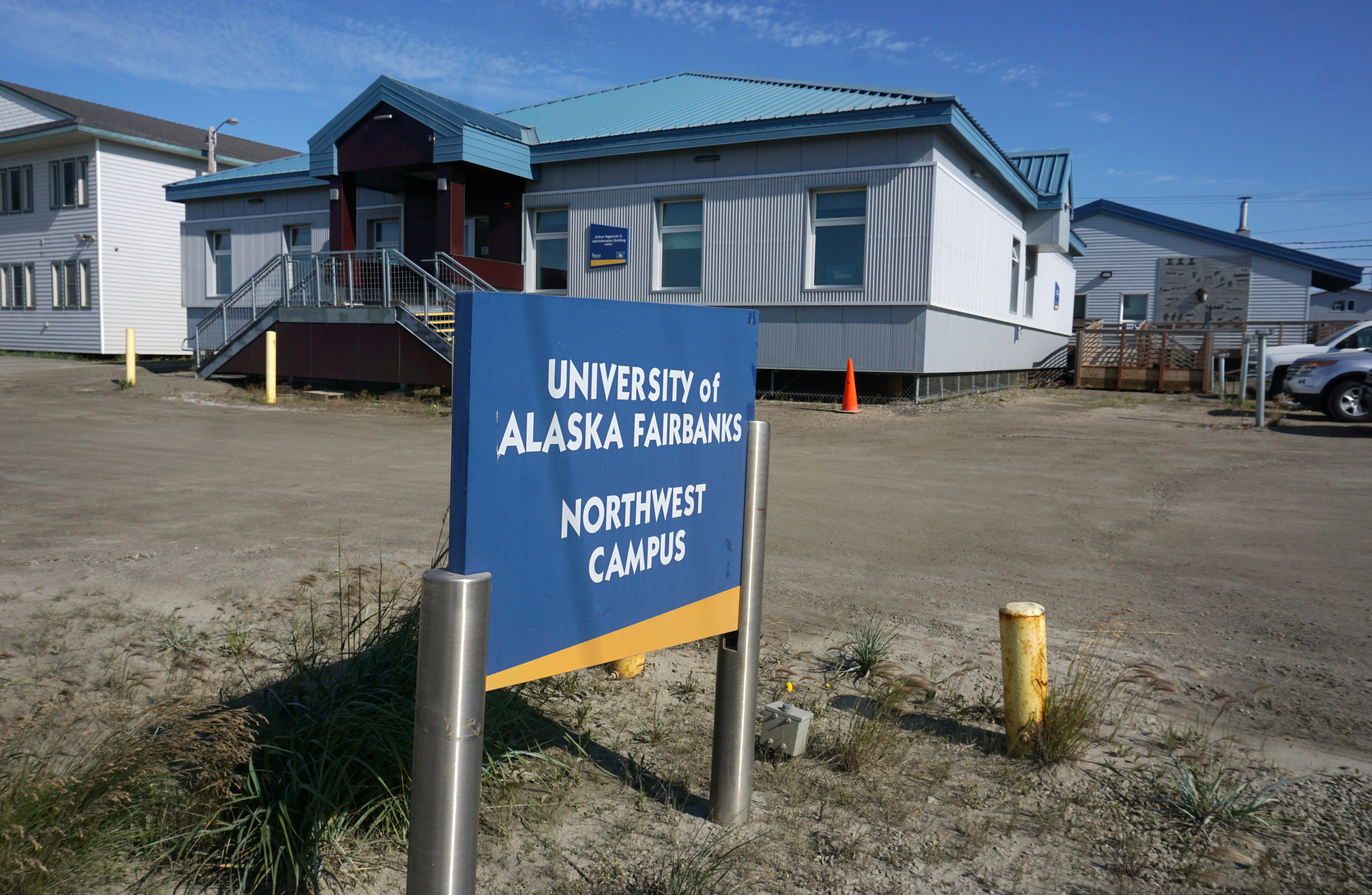
That descent was precipitous in the last two years, when ice that built up in January was erased by storms in February, he said. Even when ice is present, most of it has been thin and fragile, a situation unprecedented in a written history that goes back to mid-19th century commercial whalers, he said.
“We can be confident that your great-great-great-great-grandparents never saw ice like the last two years,” he told the Nome audience.
The pace of change is startling to young people, too. Ahmasuk, who was attending college in Oregon from 2014 to 2018, said she was surprised by conditions she saw when returned north.
“This year was the first year I came back in March, and there was no ice,” she said.
When there is little or no ice, seals and walruses cannot find platforms to rest in between food-foraging dives and during key life events like birth and nursing of young. More light penetrates the water, boosting phytoplankton blooms and upsetting a prior balance, benefitting fish and pelagic species in the upper reaches of the ocean water but reducing the amount of nutrition that drifts down to the deep-dwelling benthic species like tiny amphipods, clams, crabs and snails that are crucial to the marine-mammal food web.
The absence of a winter freeze also means lack of the usual “cold pool” of ultra-salty, super-chilled water that normally serves as an underwater barrier separating the high-fat, nutrition-dense species in the northern Bering Sea from the lower-fat species that live in the southern part of the sea.
An unsolved mystery
Heat may be the logical culprit in the Bering Strait-area die-offs and marine life disruptions. But if heat is killing animals, scientists have yet to pin down exactly how it is doing so.
One possible mechanism is the spread of toxins from algal blooms proliferating in warm conditions.
Inquiries are focused on two types of algal toxins — saxitoxin, which blocks nerve functions and causes sometimes-fatal paralytic shellfish poisoning, and domoic acid, which overheats the nervous system, causing seizures, permanent brain damage and, ultimately in some cases, death.
The region may be primed for large-scale harmful algal blooms, experts said at a two-day Nome workshop organized by the Alaska Sea Grant program of the University of Alaska Fairbanks and the Alaska Ocean Observing System.
The algae that produces saxitoxin, Alexandrium, needs water temperatures of at least 46 degrees Fahrenheit to thrive, experts said at the July 16 and 17 workshop. That threshold has been well exceeded this summer in almost all parts of the Bering Strait region, with near-shore temperatures above 60 degrees Fahrenheit in the near-shore Alaska areas and, as of mid-July, most of the region had sea surface temperatures at least 7.5 degrees above normal, according to NOAA.
Alexandrium can lie dormant for decades in underwater cysts, and Japanese researchers surveying the Bering Strait region in cruises from 2009 to 2012 found massive amounts of cysts in sediments from 18 to 21 centimeters deep, especially in the southern Chukchi Sea. With increasing warmth and sunlight penetration in the water, those cysts could bloom, and further research is “urgently needed,” said the Japanese scientists’ study explaining the findings, published in 2013 in the journal Harmful Algae.
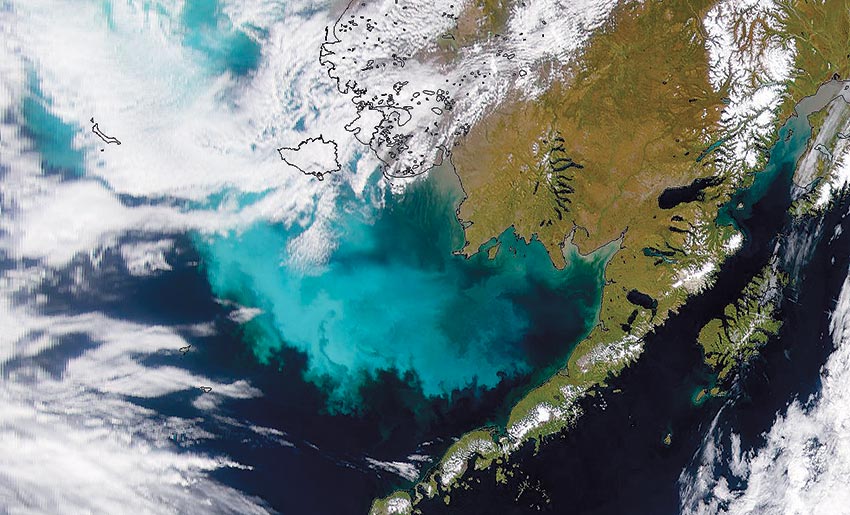
Experts are mobilizing to gather more animal, water and sediment samples and more information, especially important in a region where people depend on the sea for their food.
“It’s not just an academic issue. It is a real-life public health and safety issue,” said Gay Sheffield, a Nome-based Alaska Sea Grant marine advisory agent.
Paralytic shellfish poisoning is a long-known danger in Alaska and all along the Pacific coast, but the concerns have focused mostly in areas far south of the Bering Strait. One spot in southeast Alaska bears the name “Poison Cove” for the more than 100 people who died after eating tainted mussels.
Much less is known about algal toxins this far north.
The first data-driven documentation of the toxins in Arctic Alaska marine mammals came in a study published in 2016 in the journal Harmful Algae. It detailed test results from samples taken over about a decade showing traces of algal toxins in whales, walruses, seals and other marine mammals from Alaska’s southernmost tip to its northernmost Arctic waters. Follow-up testing in 2017 found saxitoxin in some seabirds and walruses that were among the masses found dead or sickened that year.
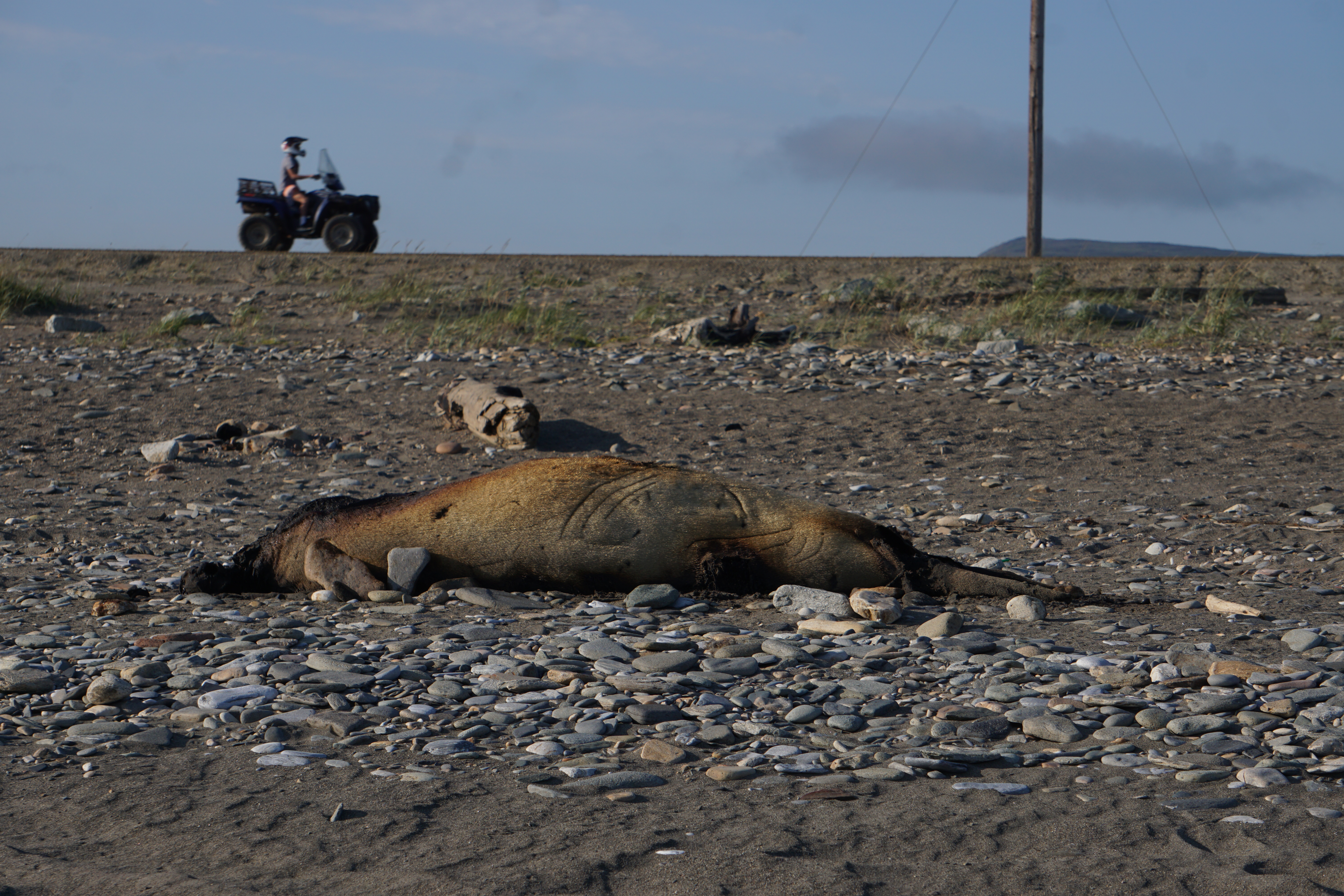
There is evidence that algal toxins are not entirely new at these latitudes. A mummified seal, part of a group of four dating to the 1940s and found by Utqiagvik-based archaeologist Anne Jensen, turned up traces of domoic acid in its gut contents. Oral tradition in the Seward Peninsula region tells of a harmful algal “red tide” that caused the deaths of several villagers, according to a National Park Service report.
If harmful algal blooms happened in the past, the magnitude of current risk is likely unprecedented, said Dean Stockwell, a University of Alaska Fairbanks oceanographer. He fears that the plentiful toxin-producing algae are being swept by currents and storms from southern parts of Alaska to the far north, where waters are now more receptive to blooms. In the past, the region’s people, for all their traditional knowledge, “weren’t dealing with these temperatures,” he said at the workshop. “It’s changing, and that’s what you have to know.”
Species on the move
There is another possible heat-related explanation for the die-offs: lack of the high-quality, high-fat food in the environment. As water temperatures rise, the lower-fat species more typical of the southern Bering Sea are moving north, taking over the higher-fat northern species’ territory.
Among the newcomers is Pacific cod, a staple of people’s diets for millennia in southern Alaska and marine predators so voracious they are known to eat seabirds. To the south, in the heated-up Gulf of Alaska, cod have become scarce, a severe blow to commercial fishermen and fishing-dependent communities; harvest quotas were slashed so deeply that the state sought a fisheries disaster declaration from the federal government.
Now it appears that cod populations have swum north, swarming Norton Sound, a waterbody famous for its harvests of succulent king crab. Fishermen are seeing evidence of a takeover in their crab pots. “We’ve caught more cod than crab, way more cod than crab,” Ahmasuk said. Cod are eating the crab bait — and probably the smaller crabs, she said.
Those warming-related shifts present an important question: Why are marine mammals and birds turning up emaciated? Are they failing to find food, or are algal toxins compromising their ability to find food? Specimens examined are usually in too poor condition to provide answers, Stockwell said. “By the time we get a carcass, all we can say is it’s starved to death,” he said, and he pleaded for more on-site reports.
Heat itself could be a cause of death. As midsummer air temperatures pushed into the high 80s and 90s, water conditions may have exceeded thresholds for salmon and some shellfish to survive. The salmon that perished in mass numbers in the river systems likely encountered deadly conditions, including low dissolved oxygen levels, before they were able to spawn, said officials with the Norton Sound Economic Development Corp., a regional fishing organization. That appears to have been the case farther south on the Bering Sea coast, where salmon appear to have had heat-induced heart attacks after water temperatures soared past 70 degrees.
Changes on land
Strange things are also happening on land on the Seward Peninsula, the mostly tundra-covered and treeless finger of land that juts out toward Russia.
Lightning strikes sparked 24 new fires in just two days on the peninsula around the time of the summer solstice, and one fire that started on June 10 and has grown by late July to over 101,000 acres poured enough smoke into Nome and other communities to warrant an advisory from state environmental officials — unusual, given the relative lack of trees that typically fuel such large fires elsewhere — that air quality could reach hazardous levels.
Meanwhile, an infestation of a leaf-gobbling invasive insect, the rusty tussock moth, has swarmed through vast swaths of the peninsula, turning sections of tundra and willow stands rust-colored or brown. “They’ve infested my auntie’s cabin really, really bad,” Ahmasuk said.
The rusty tussock moth, native to Europe and one among several species of tussock moths, has spread across North America, even to northern Canada, said Stephen Burr, a U.S. Forest Service entomologist based in Fairbanks. The Seward Peninsula its most recent Alaska infestation site. Elsewhere, infestations of tussock moths are linked to warming conditions.
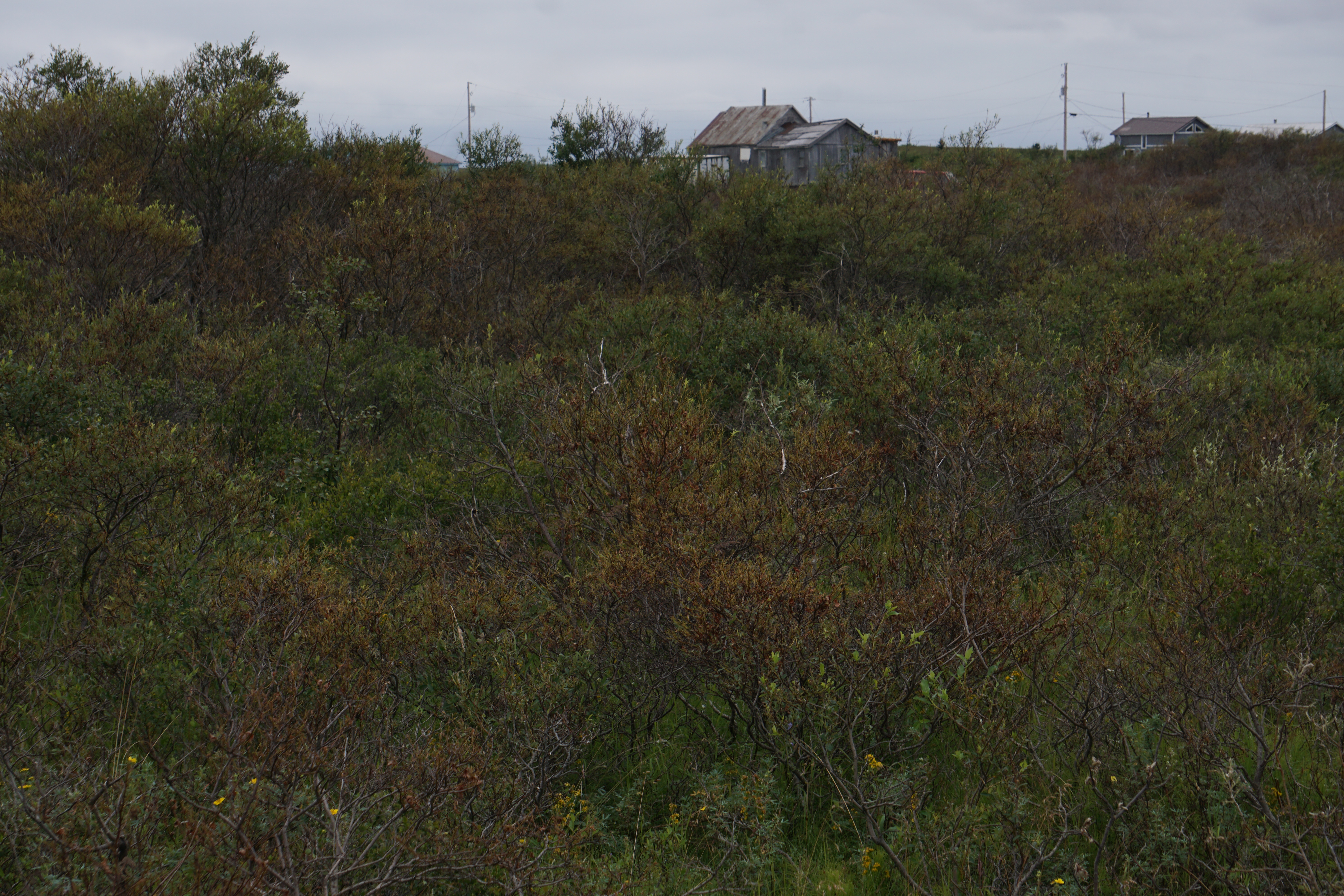
Another, more profound terrestrial change is the accelerated thaw of the region’s permafrost. It’s been a chronic problem as the climate warms, creating more sagging spots in local roads and causing buildings to tilt.
Over the past two years, soil temperatures have soared, said University of Alaska Fairbanks expert Vladimir Romanovsky, who traveled to the area in July to check on an array of monitoring sites.
Romanovsky and his UAF team found lots of evidence of year-round thaw at the more than 60 Seward Peninsula sites they monitor through a U.S. Department of Energy program called Next-Generation Ecosystem Experiments.
“At least half of the sites show that summer thaw is not freezing completely in the winter,” he said. Finding so much of that soil that remains thawed even in winter, soil called talik, was stunning, he said.
“Development of talik in so many locations, well, it is unprecedented — never happened before,” he said, adding that those were “completely undeveloped locations,” not disturbed by human use or wildfires, the usual catalysts for talik development.
Even that change is linked to the warming and increasingly ice-free waters of the Bering and Chukchi seas.
When there are vast stretches of open water in winter, the storm systems that blow in can pick up moisture from the seas, dumping it from the atmosphere to the ground as snow, Thoman said. Nome in the past two winters had near-record snowfalls.
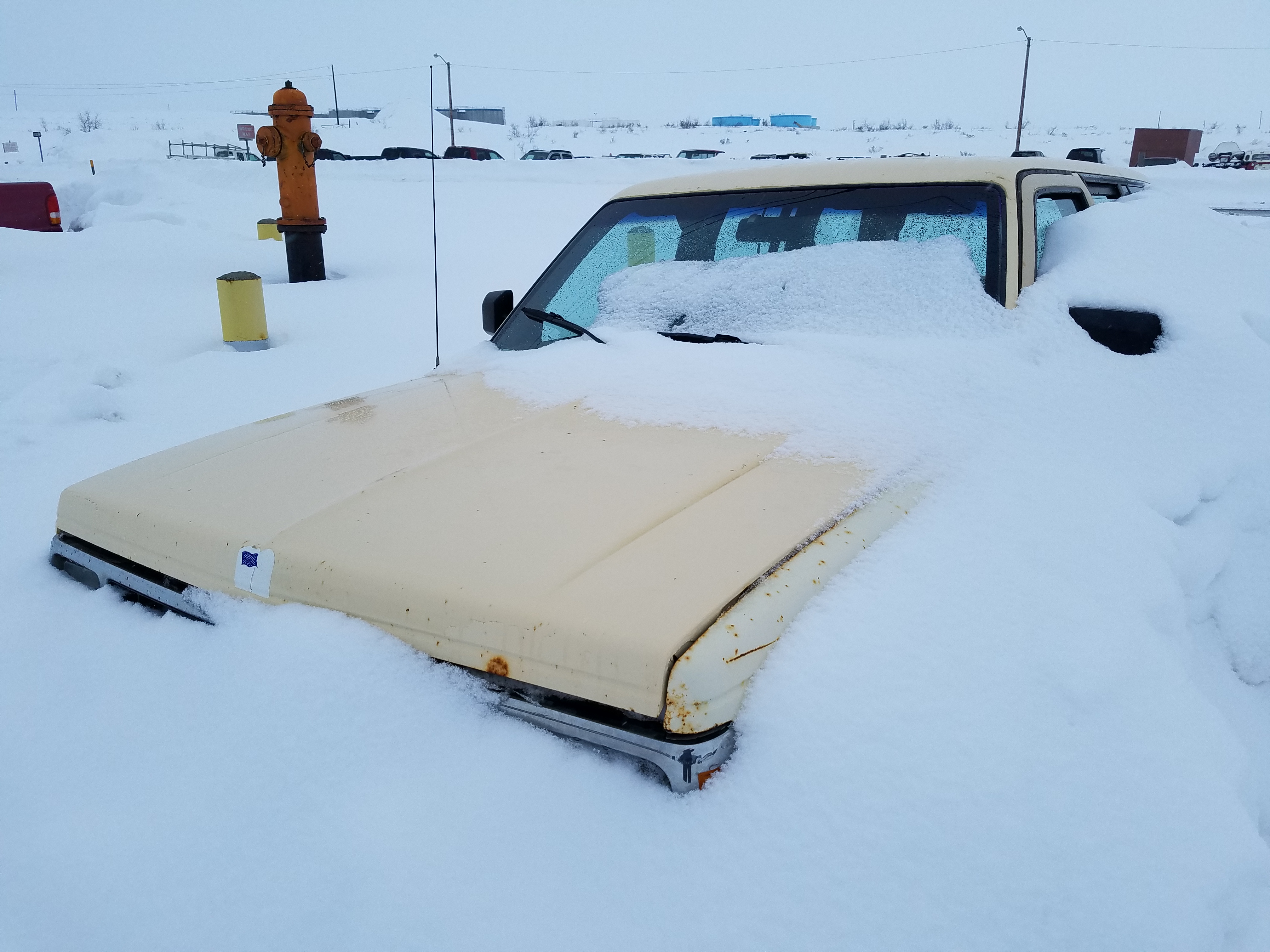
Snow acts as an insulator, trapping soil heat. Past research by Romanovsky and DOE scientists shows that snow depth and permafrost warming is closely tied, on the Seward Peninsula and elsewhere.
Paradoxically, more winter warming in the region could slow the thaw. If winter precipitation arrives not as now but rain, the ground could be swept bare, allowing air temperatures just cold enough to be below freezing to penetrate the earth, Romanovsky said.
“Because of the two years where there was so much snow, it does not mean you cannot have less snow in the future,” he said. If rain is followed by a cold snap, “for permafrost, it is a good situation.”
That would likely be a temporary fix.
Long-term trends in the region, notwithstanding year-to-year variations, are of continued warming in the ground, warming in the air and ice loss at sea, all feeding on each other.
“You don’t need the weather service to tell you that odds are it’s going to warmer than normal next fall. And the fall after that. And the fall after that,” Thoman said